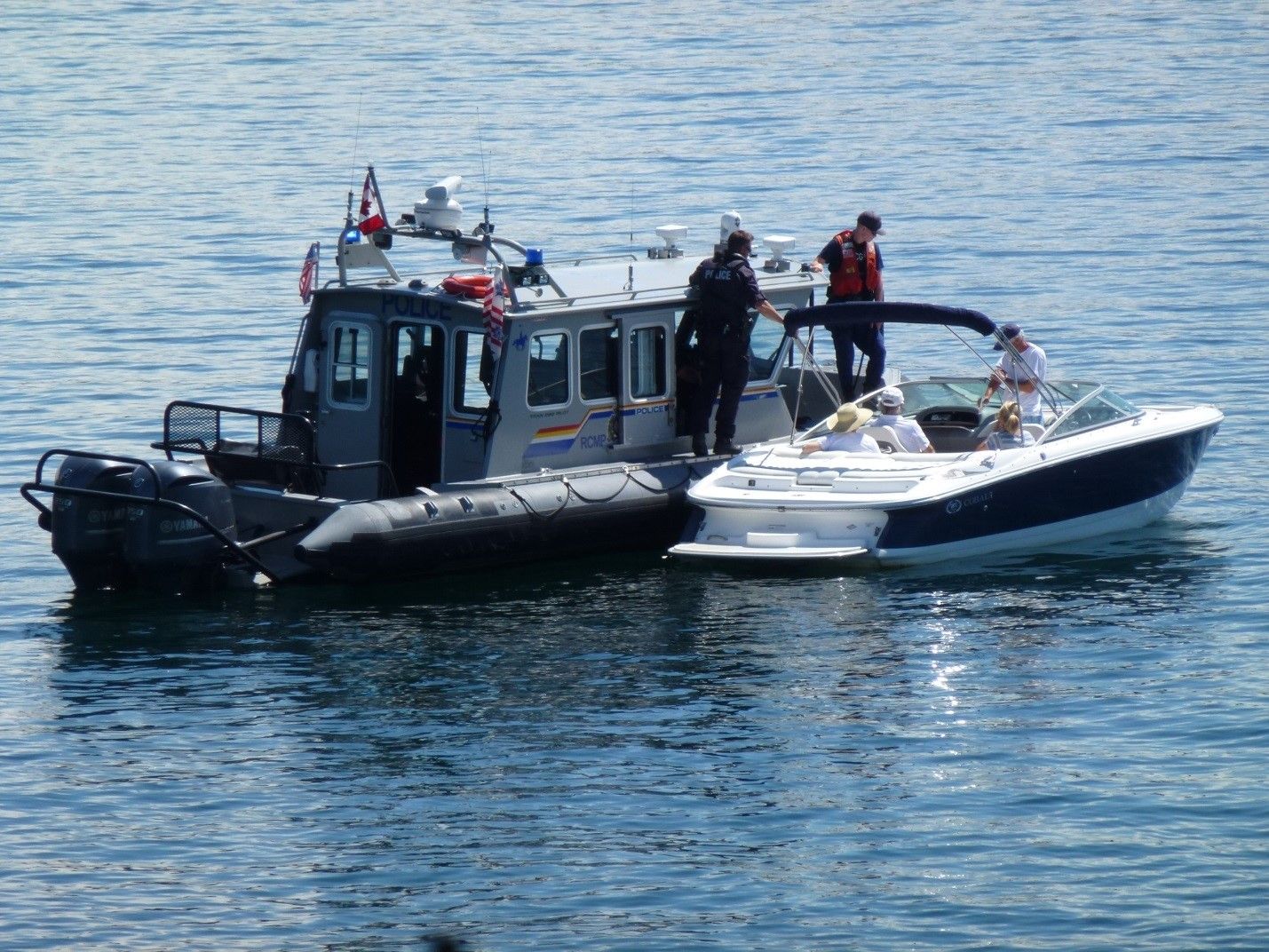So there you are, cruising along the River in your own bubble of tranquility, enjoying some of the most picturesque scenery on the planet. As a good captain of your craft, you are constantly monitoring your surroundings to stay on course and avoid boating dangers. During your routine surveillance, you notice a military-like boat closing in fast behind you with blue lights flashing.

Yes, the bubble is bursting as you are about to experience a “water stop”. Although the outcomes of water stops can be arrest, fines, vessel seizure, or an onboard vessel search, it is more likely that you will be left to go on your way, but only after 20 minutes of questioning.
Topics may vary widely, including vessel safety equipment, personal questions about captain and crew, your places of disembarkation and destination, the purpose of your trip, your length of stay, your cargo, your vessel check-in reporting number, Canadian Pleasure Craft Operator Card (PCOC) or an equivalent (unless your stay in Canada is less than 45 days), passport (or equivalent), etc. As you answer the questions while one of the officers in law enforcement body armor may be typing information into an onboard computer, tranquility is replaced by stress, at a minimum.
The 5,525 mile border between the US and Canada is often referred to as the longest “undefended border in the world”, but this is true only in the military sense, as civilian law enforcement is present. It is illegal to cross the border outside border control points. Everyone crossing the border whether by boat, car, plane or foot must be checked. Crossing the border is serious business, and the penalties for non-compliance can be severe.

The purpose of border control is primarily to prevent the illegal flow of people, goods, and services across the border in either direction. Human trafficking, transport of drugs (legal and illegal), firearms, explosives, large sums of money, certain agricultural products, alcoholic beverages, and cigarettes are among some of the specifics.
In August 2017, the border between Quebec and New York saw an influx of irregular crossings by people seeking asylum in Canada. Between January 2017 and up until the end of March 2018, the Royal Canadian Mounted Police (RCMP) intercepted 25,645 asylum seekers between ports of entry. Another 2,560 asylum seekers were apprehended between ports of entry by the RCMP in April 2018, for a total of just over 28,000 RCMP interceptions between January 2017 and April 2018. In addition to interceptions, the value of border control operations is deterrence. One can only imagine the influx of people, goods and services that might cross the border without this deterrence.
The nature of US/Canadian Border Control is evolving, and future directions may be found in UNITED STATES–CANADA BEYOND THE BORDER: A SHARED VISION FOR PERIMETER SECURITY AND ECONOMIC COMPETITIVENESS Action Plan, December 2011. One outcome from this work has been the establishment of joint US and Canadian border patrols. The chances are good that a water stop will have both US and Canadian officers on the patrol boat. Boaters should also know that water stops can occur without crossing the border. In addition to Customs and Border Control (CBP) and the Coast Guard on the US side of the border, the New York State Police, the Sheriff, the State DEC Conservation Police, and local police have Marine Patrols that are on the water enforcing “State Laws”.
On the Canadian side, the Canadian Border Service Agency (CBSA), the Royal Canadian Mounted Police (RCMP), the Ontario Provincial Police (OPP), and Regional Police are also out there.
Whatever the likelihood is for being stopped on the water for the weekend boater, it is much greater for Thousand Islanders who may ply the waters of the River daily since it is our “road system”. Know that a “probable cause” typically required for a traffic stop is not required for a water stop. A water stop is most often a random occurrence and does not usually mean you have committed a boating infraction. Some advice for handling these stops successfully is to carry the required documents, to be calm and polite during the stop, and to answer questions accurately and succinctly. This is not an opportunity to make a new friend or to demonstrate your complete knowledge of whatever topic the question addresses.
See Part II: You, Your Boat, Requirements for Crossing the Border where I review the requirements for boaters crossing into Canadian and/or US waters.
[Author's Note: The author would like to acknowledge Michael Niezgoda and his colleagues at U.S. Customs and Border Protection, Office of Public Affairs, Media Relations, and Joe Ulicki and his colleagues at the Canada Border Services Agency, Programs and Operations, Strategic Policy Branch for their review and suggestions for this article.
By Dane Zabriskie
Like many of us, Dane Zabriskie was shaped by his family, education, profession, and the St. Lawrence River, where he has summered annually for more than 45 years.
Dane also is put to work each month as one of our loyal proof-readers! His work is much appreciated!
Posted in: Volume 14, Issue 4, April 2019, Sports, News article
Please click here if you are unable to post your comment.
